Are you a snacker? Do you find you ‘need’ to eat every couple of hours? Do you find the gaps between meals just that bit too long? Whether dieting or not, try and avoid the fatty, processed junk food, cakes or chocolate. Some foods are ideal as quick-to-grab snacks to graze on during the day. For weight loss, aim for more frequent but smaller meals to kick start your metabolism. But ensure these are healthy snacks. Aim for a mix of fibre, protein, healthy fats and low sugar to make you feel fuller more quickly and yet for longer.
The process of chewing helps your body feel full. So look for snacks that require a good chew, rather than slurping down on a soft fudge or chocolate bar. Ideal snack foods would be crunchy fruit, raw vegetables and nuts. You can prepare these ahead of your working day. Most of us have some kinds of little plastic pots with lids stocked up in cupboards (yup where do they come from – I swear they breed!).
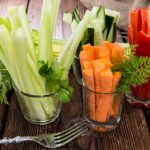 Slice up some fingers of vegetables such as carrots, peppers, cucumber, celery, mange tout, mini sweetcorn. Ideal on their own, you can add a healthy dip such as hummus or peanut butter if you like. For an element of sweetness, slice up a nice crunchy apple, some blueberries, raisins, Brazil nuts and sunflower seeds. Again, if you need a dip some natural yoghurt would be a nice addition.
Slice up some fingers of vegetables such as carrots, peppers, cucumber, celery, mange tout, mini sweetcorn. Ideal on their own, you can add a healthy dip such as hummus or peanut butter if you like. For an element of sweetness, slice up a nice crunchy apple, some blueberries, raisins, Brazil nuts and sunflower seeds. Again, if you need a dip some natural yoghurt would be a nice addition.
Try and start your day with a good breakfast. This will help you having a sudden blood sugar drop mid-morning. Often, what we believe to be hunger is actually dehydration. So ensure you drink plenty of water during the day. Have a drink if you feel hungry yet you know it’s not been long since you last ate. If satiated, then you weren’t actually hungry, you were thirsty. That said, don’t drink instead of actual meals, that isn’t healthy.
 A lot of our eating timescales are habitual. As a species, humans like consistency and habits form easily. Try to avoid insisting on a set time for your coffee or tea break, or at least don’t always take a slice of cake or sugary biscuit at the same time. These should be occasional treats, not a daily habit. If you can mix up your break times, you won’t find you feel hungry shortly before this time as a matter of habit.
A lot of our eating timescales are habitual. As a species, humans like consistency and habits form easily. Try to avoid insisting on a set time for your coffee or tea break, or at least don’t always take a slice of cake or sugary biscuit at the same time. These should be occasional treats, not a daily habit. If you can mix up your break times, you won’t find you feel hungry shortly before this time as a matter of habit.
Do you have a night-time supper shortly before bed? This is rarely necessary and more a habit. However, if you have early meals (eg 6am breakfast, 12pm lunch, 5pm dinner) but go to bed say around 11pm, then perhaps a light snack around 9pm is justified. But make it light not stodge or sugar.
So let’s look at some simple snacks or small light lunches that will help boost your blood sugar levels and keep you going until the next mealtime.
Pepper and guacamole: slice some peppers into fingers, mixed colours for a colourful snack with a mixture of taste. Add your own home-made guacamole:
- avocado,
- chopped salad tomato,
- finely chopped red onion,
- finely chopped chilli (quantity and type dependent on the heat you prefer),
- a little lime or lemon juice,
- a little chopped coriander.
Roughly mash all the ingredients together, or pulse in a food mixer or blender, to the consistency you prefer. Store in a bowl, covered with cling film, in the fridge.
Cottage cheese with fruit and walnut: With a small tub of plain cottage cheese, add one chopped walnut and fruit of your choice. Tropical fruits go best, for example pineapple, mango or papaya. For a bit of extra crunch, spread on a high fibre wholemeal cracker.
Cucumber and hummus: As cucumber is particularly plain in taste, I would recommend going for a flavourful hummus – red pepper or lemon and black pepper for example. Slice half a cucumber into 2-3 inch portions then into fingers. For a little crunch, maybe add a small handful of pretzels.
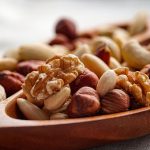 Nuts: Mixed nuts are a brilliant source of protein and healthy fats, but you may want to add sultanas or raisins for a top up of sweetness. Avoid salted nuts to avoid excess sodium in your diet.
Nuts: Mixed nuts are a brilliant source of protein and healthy fats, but you may want to add sultanas or raisins for a top up of sweetness. Avoid salted nuts to avoid excess sodium in your diet.
Olives and feta cheese: Mix chopped squares of feta cheese into a container with your preferred choice of olives, and a gentle drizzle of light extra virgin olive oil – flavoured or plain.
Cheese and crackers: choose a wholegrain or rye cracker, and pair with your favourite cheese. Hard cheeses tend to be lower in fat. If you require a sweetness, add some thin slices of crunchy apple. If you like a chutney kick, go for a good strong taste and use sparingly. Ultimately, no chutney is technically a diet ingredient so a little with a good taste is best.
Apple and peanut butter: Look for a peanut butter without sugar and added oil. Pair with apple slices to dip.
Mixed berries and yoghurt: Choose a mix of your favourite berries, such as blueberries, redcurrants, raspberries, strawberries and blackberries. Sprinkle into or on a low fat natural or Greek joghurt. If you need extra sweetness, sparingly drizzle on some natural honey.
Celery and cream cheese: choose a low fat cream cheese, and dip with sliced celery sticks. Some people like to add salt with celery, but don’t if you need or want to reduce your sodium intake. This is quite a bland snack, so why not add extra flavour with your favourite herbs and spices.
 Root vegetable crisps: If you’re a crisp fiend, and just can’t let them go, swap potato crisps for vegetable crisps. You can buy them, or make your own (simple recipe available in my book ‘Picnics, Parties and Drinks’).
Root vegetable crisps: If you’re a crisp fiend, and just can’t let them go, swap potato crisps for vegetable crisps. You can buy them, or make your own (simple recipe available in my book ‘Picnics, Parties and Drinks’).
Dark chocolate and almonds: If you ‘need’ chocolate, then go for dark. The darker the better. Milk and white chocolate have so much fat and sugar added. Dark chocolate can be bitter, however, if you’re not used to it. So you may want to add some raspberries for sweetness as well as almonds or other nuts.
Popcorn: aim for plain or salted popcorn, rather than sweet or toffee coated.
Melon and prosciutto: wrap slices of your favourite melon, honeydew for example, with thin slices of prosciutto ham.
 Roasted chickpeas: drain and rinse a tin of chickpeas, then dry them as much as possible. Place in a bowl and drizzle with oil, then sprinkle with salt and any herbs you may want to add for flavour. With your hands, mix together to ensure all the chickpeas are coated then spread them out evenly onto a dry baking tray. Roast the chickpeas at 400F/200C for 20-30 minutes, stirring or shaking the chickpeas every 10 minutes to ensure even roasting. Don’t worry if any chickpeas pop or split. Once golden in colour remove from the oven and, while still warm, sprinkle spices if you want (eg chilli or paprika) and stir through. When warm these are crispy, but when cool they become more chewy.
Roasted chickpeas: drain and rinse a tin of chickpeas, then dry them as much as possible. Place in a bowl and drizzle with oil, then sprinkle with salt and any herbs you may want to add for flavour. With your hands, mix together to ensure all the chickpeas are coated then spread them out evenly onto a dry baking tray. Roast the chickpeas at 400F/200C for 20-30 minutes, stirring or shaking the chickpeas every 10 minutes to ensure even roasting. Don’t worry if any chickpeas pop or split. Once golden in colour remove from the oven and, while still warm, sprinkle spices if you want (eg chilli or paprika) and stir through. When warm these are crispy, but when cool they become more chewy.
Avocado with salsa: make your own salsa: blend together chopped tomatoes, finely chopped red onion, garlic clove pressed or chopped, dash of lime juice, sprinkle of coriander. I personally like to add some chopped cucumber for coolness. If you like heat, add some finely chopped chilli. Either eat with slices of avocado, or fill the hole in half an avocado. If not dieting, add some low salt tortilla chips for added crunch.
These are just a few ideas, more small meals and mini eats can be found in my second book ‘Picnics, Parties and Drinks’ on Amazon for kindle download: https://www.amazon.co.uk/dp/B0773TG4JY?ref_=k4w_oembed_rIVl4ULIfziBcT&tag=kpembed-20&linkCode=kpd
Happy snacking, and take care,
Love
Maggie x

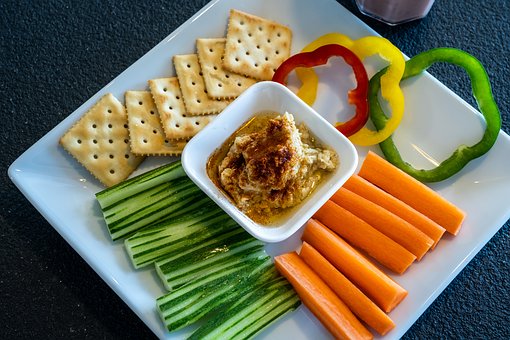

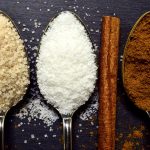 Sugar is a prime culprit. You get a short-term mood lift, but sugar causes an imbalance in chemicals in your brain. These chemical imbalances can lead to depression or cause mood swings and raise feelings of anxiety. On top, excess consumption of sugar can of course cause obesity and tooth decay – in themselves these cause you to dislike your own appearance and can even result in quite serious clinical depression.
Sugar is a prime culprit. You get a short-term mood lift, but sugar causes an imbalance in chemicals in your brain. These chemical imbalances can lead to depression or cause mood swings and raise feelings of anxiety. On top, excess consumption of sugar can of course cause obesity and tooth decay – in themselves these cause you to dislike your own appearance and can even result in quite serious clinical depression.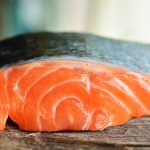 If you’re a fish eater, eat more Omega 3 rich fish such as sardines, trout, salmon and mackerel. For non-fish eaters, other foods high in Omega 3 include walnuts, chia seeds, soybean oil, plus foods specifically fortified with Omega 3 (this will be declared on the food packaging). Dietary supplements are also available.
If you’re a fish eater, eat more Omega 3 rich fish such as sardines, trout, salmon and mackerel. For non-fish eaters, other foods high in Omega 3 include walnuts, chia seeds, soybean oil, plus foods specifically fortified with Omega 3 (this will be declared on the food packaging). Dietary supplements are also available. To avoid blood sugar drops, eat regularly but also choose slow-release energy foods such as rice, pasta, wholegrain breads, cereals, nuts and seeds. Avoid sugary food and drink, to avoid blood sugar fluctuations.
To avoid blood sugar drops, eat regularly but also choose slow-release energy foods such as rice, pasta, wholegrain breads, cereals, nuts and seeds. Avoid sugary food and drink, to avoid blood sugar fluctuations.
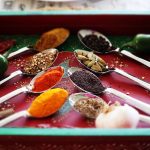 I recommend keeping a basic stock of spices to hand ready. A little pestle and mortar means you can create your own curry powder/paste for your own signature dish. A simple spice mix would be equal quantities of brown sugar, cinnamon, cloves, nigella seeds, turmeric, cumin, coriander, cardamom and garam masala. Grind any non-powdered spice (eg cumin seeds) to a powder with a pestle and mortar, and mix all the powders together. When using your home-made curry powder, you can add heat by including fresh chopped chillies, or dried chilli powder. You can use a tinned tomato base or a creamy one with coconut milk. Ensure you cook the spices for a minute or two in oil to release the aromas, but don’t allow them to burn before you add in your chosen liquid.
I recommend keeping a basic stock of spices to hand ready. A little pestle and mortar means you can create your own curry powder/paste for your own signature dish. A simple spice mix would be equal quantities of brown sugar, cinnamon, cloves, nigella seeds, turmeric, cumin, coriander, cardamom and garam masala. Grind any non-powdered spice (eg cumin seeds) to a powder with a pestle and mortar, and mix all the powders together. When using your home-made curry powder, you can add heat by including fresh chopped chillies, or dried chilli powder. You can use a tinned tomato base or a creamy one with coconut milk. Ensure you cook the spices for a minute or two in oil to release the aromas, but don’t allow them to burn before you add in your chosen liquid.